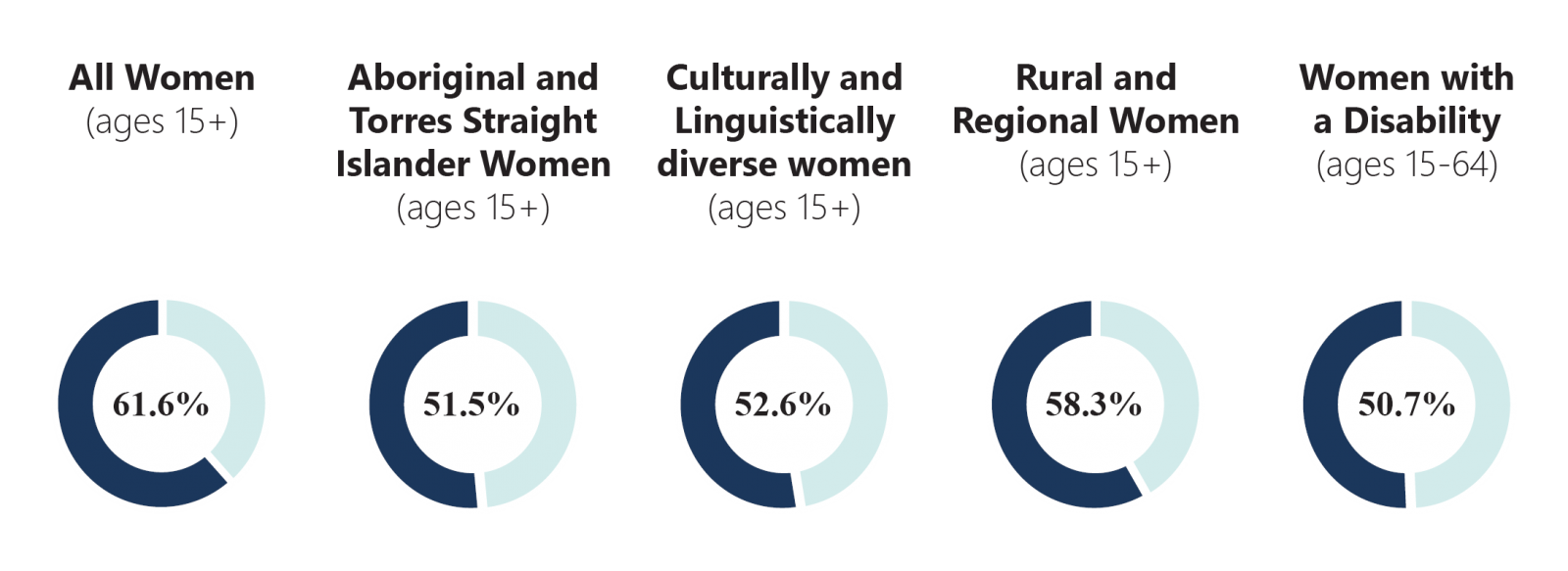Current approach
WGEA collects gender data on employees, however it is not mandatory to report to WGEA on additional diversity data such as Aboriginal and Torres Strait Islander background, age, location, cultural and linguistic background and disability.
In 2020-21 WGEA collected data on the age and location of employees on a voluntary basis. There was a very high reporting rate among employers, with 73.8 per cent of employers reporting voluntarily on age, and 72.8 per cent of employers reporting voluntarily on the primary workplace location of their employees (discussed in the next section ‘Refining the Gender Equality Indicators’).
Proposed approach
Diversity data provides a clearer picture on the state of gender equality in the workplace and enables WGEA to support employers to drive gender equality through targeted approaches. For example, the women’s workforce participation rate for all women is 61.6 per cent. But it is substantially lower for particular groups of women including women with a disability (50.7 per cent) and Aboriginal and Torres Strait Islander women (51.5 per cent) as shown in figure 8. This reflects particular challenges faced by different groups of women.
Figure 8 – Women from diverse backgrounds have lower workforce participation rates than the national average for Australian women

Sources: ABS Labour Force Australia, Detailed, November 2021; ABS, National Aboriginal and Torres Strait Islander Social Survey, 2014-15; ABS, Disability, Ageing and Carers, Australia: Summary of Findings, 2018
Many stakeholders commented on the importance of diversity data. But many stakeholders also raised serious concerns about sensitivities with employers collecting diversity data about their employees – with many employers noting they do not currently collect this data. Some employers advised they collect some diversity data. But the extent to which this happens and the method used varies significantly from employer to employer.
Consultation and research has shown that reporting on diversity information by individuals in the community can be quite low. This is due to fears about how this information may be used and the negative impact it may have on their employment. Employees would need to feel safe to provide this information. They would need to trust that it would be used appropriately in order to provide this information to their employers.
Also, privacy issues arise with employees being required to disclose diversity details to their employers. When there are small numbers of employees reporting their diversity data it could make them easily identifiable in WGEA public reports.
Given the sensitive issues raised in the consultation process, further research is needed on collecting diversity data in addition to gender. This is why it is recommended that WGEA undertake a qualitative research project on the best way to collect more diversity data in addition to gender data to enable voluntary reporting (Recommendation 6.1).
However, given the high voluntary reporting to WGEA on age and location noted above, it is recommended that reporting on age and location should be mandatory across all employers (Recommendations 7.1.a and 7.1.b in the next section).
Recommendation 6 – Research the best way to collect diversity data
6.1 Undertake qualitative research with relevant stakeholders, led by WGEA, on the best way to collect more diversity data in addition to gender data to enable voluntary reporting, including on Aboriginal and Torres Strait Islander background, cultural and linguistic diversity, and disability.
There was strong support in the consultation process for collecting additional diversity data. But sensitive issues were also raised about employees being reticent to provide this information to employers because of concerns about how this information may be used and the negative impact it may have on their employment. This research will consider how to address these issues.
